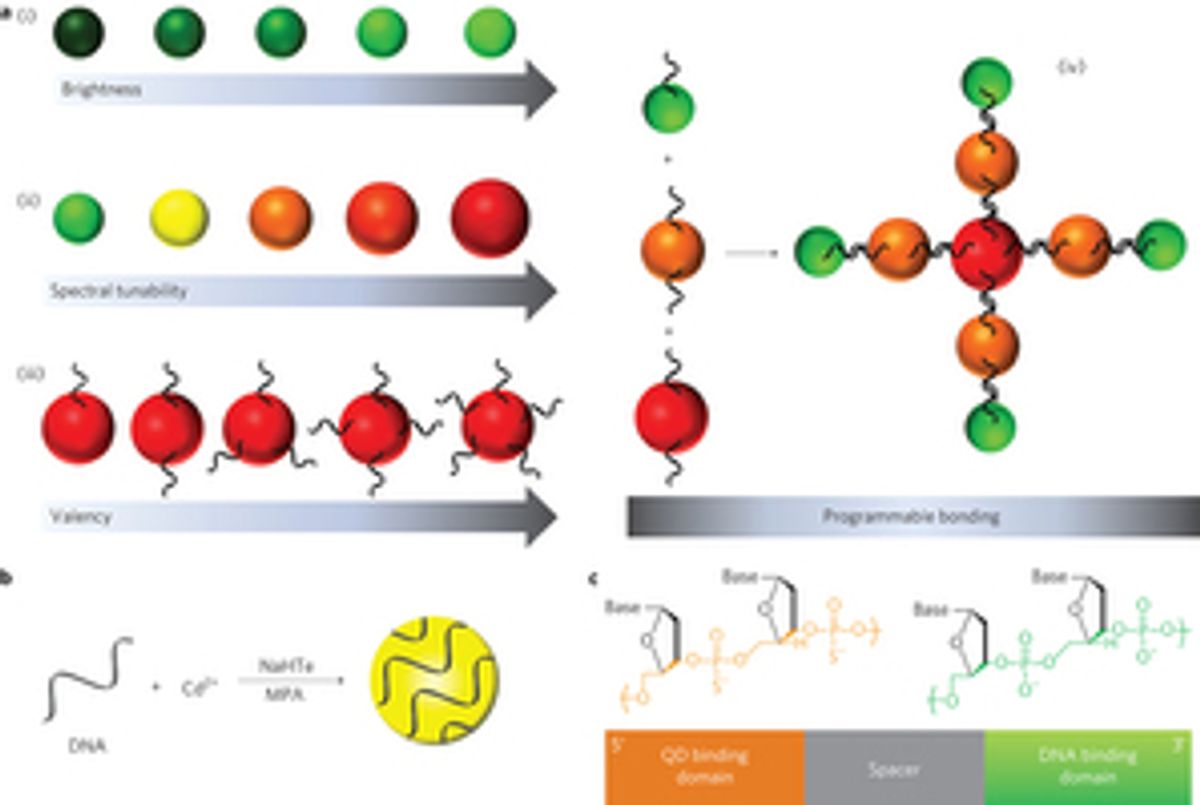Edward Sargent, Professor in The Edward S. Rogers Sr. Department of Electrical & Computer Engineering at the University of Toronto, has been a busy man of late.
At the end of last month, I wrote on his work in using colloidal quantum dots for multi-junction solar cells.
As testament to how multi-disciplinary investigations into nanotechnologies can be, expertise in both semiconductor engineering and DNA had to be combined to realize their results.
"The credit for this remarkable result actually goes to DNA: its high degree of specificity – its willingness to bind only to a complementary sequence – enabled us to build rationally-engineered, designer structures out of nanomaterials," says Sargent in a Physorg.com article.
"The amazing thing is that our antennas built themselves – we coated different classes of nanoparticles with selected sequences of DNA, combined the different families in one beaker, and nature took its course,” adds Sargent. “The result is a beautiful new set of self-assembled materials with exciting properties." The analogy to an antenna comes from the fact that like a traditional antenna these nano-antennae capture dispersed energy and then concentrate that captured energy to a specific location. According to Sargent, this particular kind of antenna for light is seen in the leaves of trees. While creating light absorbing antennae from quantum dots is an interesting way to manipulate the material, it would seem that developing a method for building various structures with disparate types of quantum dots would be the more impressive bit of this research. "What this work shows is that our capacity to manipulate materials at the nanoscale is limited only by human imagination,” says Kelley in the article. “If semiconductor quantum dots are artificial atoms, then we have rationally synthesized artificial molecules from these versatile building blocks."Dexter Johnson is a contributing editor at IEEE Spectrum, with a focus on nanotechnology.




